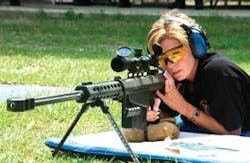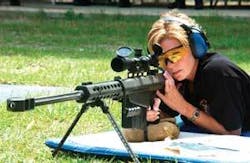By John Keller
ARLINGTON, Va. - The U.S. Defense Advanced Research Projects Agency (DARPA) in Arlington, Va., is asking the electro-optics industry to design an advanced sniper rifle targeting scope that helps compensate for crosswinds and enables the sniper to hit the target with his first shot.
DARPA issued a broad agency announcement (BAA07-03) in December for the Advanced Sighting System (One-Shot) program to enable snipers to hit targets accurately with the first round, under crosswind conditions, at the maximum effective range of the weapon. The standard U.S. Army Remington M24 sniper’s rifle has a published maximum range of nearly half a mile.
Only companies that have classified secret facility and safeguarding clearances will be allowed to work on this program. Companies that do not have both of these clearances must team with an organization that does if they want to participate.
The Advanced Sighting System (One-Shot) must provide a measure of downrange crosswind and range to target. The system then will use the information to compensate the bullet trajectory to achieve a substantially increased success of kill, DARPA officials say.
Researchers over the last decade have tried to measure crosswinds in two ways: laser Doppler velocimeter (LDV) and coherent Doppler lidar. DARPA officials point out that these techniques can be useful for some applications, but do not seem to be adequate for this application.
Companies interested in working on the program may consider any potential sensor technology, individually or in combination. DARPA cautions, however, that U.S. forces need this kind of technology quickly and affordably, which lends itself to mature technologies.
The system must operate over a range of visibilities, atmospheric turbulence, and environmental operating conditions. The system ultimately developed will have performance that will be classified.
The development work will be conducted in two phases. First, the contractor chosen must demonstrate the feasibility of the proposed solution. Second, the successful contractor will build a prototype of a size, weight, and power consumption sufficient for battlefield use.
The Advanced Sighting System must be able not only to enhance accuracy in a given measurement period and in several profiled wind segments over the engagement range, but also to consider topography, pressure, and temperature.
The system, at minimum, must have sensing and display elements integrated with a rifle or spotter’s scope.




